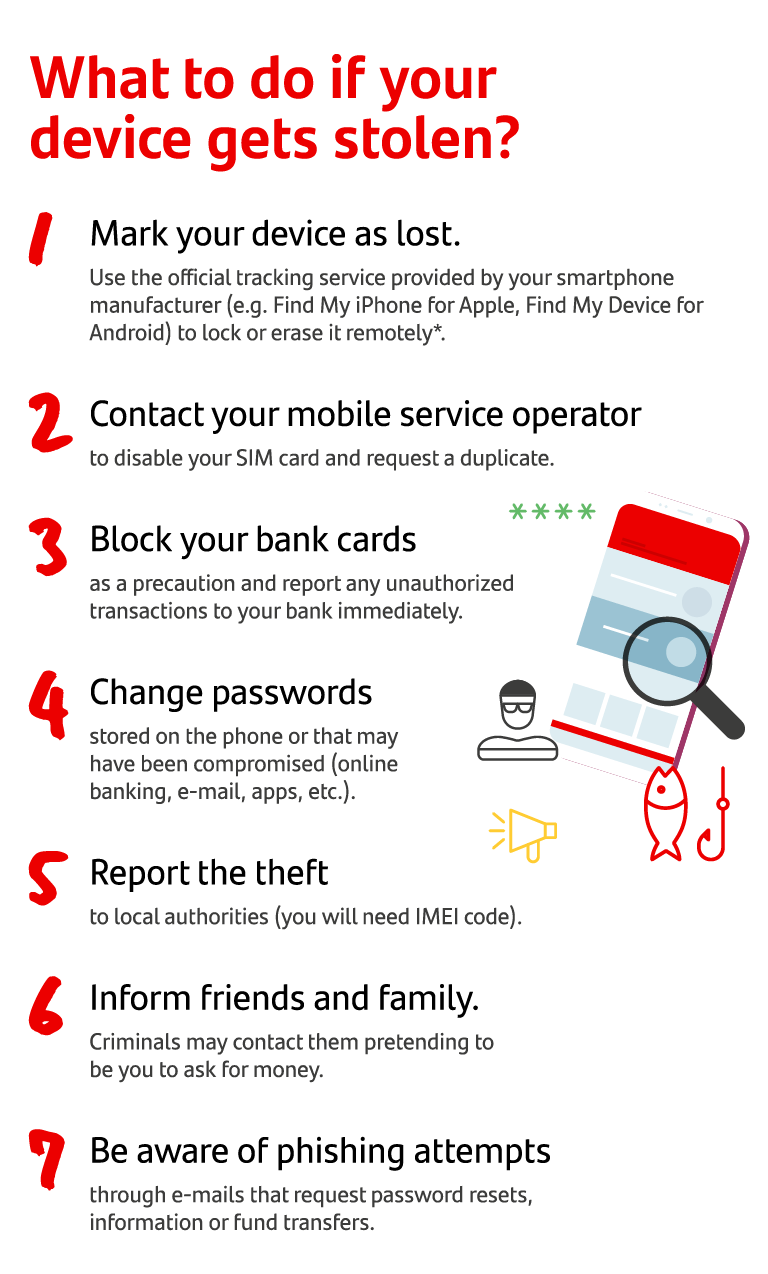Phone theft is one of the most common types of crime: in London, a mobile is stolen every six minutes, according to police data. At Santander, we prioritize education on, and awareness of, cybersecurity to understand potential threats and ways to repel them.
Beyond the loss of the device, the risks are also in the stored personal and financial information, which criminals can use to access bank accounts, make unauthorized purchases, or even identity theft. Fortunately, there are steps you can take to minimize these risks. Here's how to protect your phone before and after a device is stolen.
What can thieves do if they get hold of an unprotected mobile phone?

Access your personal information
Such as emails, text messages, photos, and stored files, possibly gathering sensitive details like passwords or financial data.

Steal your money or make purchases
If your phone is linked to payment apps or has stored credit card details, criminals could make unauthorised purchases or transfers.

Carry out identity theft
Using the information on your phone, they might impersonate you to commit fraud, such as creating fake accounts or scamming your contacts.

Use your social media accounts
To post harmful content, send malicious messages, or scam your friends.
Suggested safety tips for mobile phone users
Be aware of your surroundings
- Be mindful when inputting your PIN in at a public place, as someone could see it. This could give them access to your phone if they successfully steal it, even if you have activated facial recognition.
- Keep your device in your pocket, when possible, as thieves are looking for unlocked devices, which are more valuable than locked ones.
- Avoid using phone covers that hold your driving license and other cards.
Protect your phone
- Use a different PIN for your screen lock code and banking apps.
- Use biometric authentication (face recognition or fingerprint) and activate two-step verification on your devices and apps, when possible.
- If you have an iPhone, activate enable the ‘Stolen Device Protection’ for extra security when your device is away from familiar locations, such as home or work.
- Set up tracking capabilities on your phone (e.g., Apple’s ‘Find My’ or Google’s ‘Find My Device’) to allow you to locate, secure or erase the device from another phone or laptop and block it remotely.
- If available, set spending limits and alerts on your banking accounts to stay informed and minimize risks.
In the unfortunate event that your phone is stolen, there are a few steps you should take to prevent further loss and protect your data:

*Some paid services, such as Apple Pay, are automatically disabled when a device is marked as lost. However, others, such as Google Pay, may require you to manually delete the device from your account.
By taking these precautions, we can make it more difficult for criminals to steal and access our phones, ensuring the security of our personal and financial information.
At Santander, we prioritize education on, and awareness of, cybersecurity to understand potential threats and ways to repel them. Therefore, we advise our clients in a situation of phone theft, or of the credentials to access online banking, to change their password immediately.














